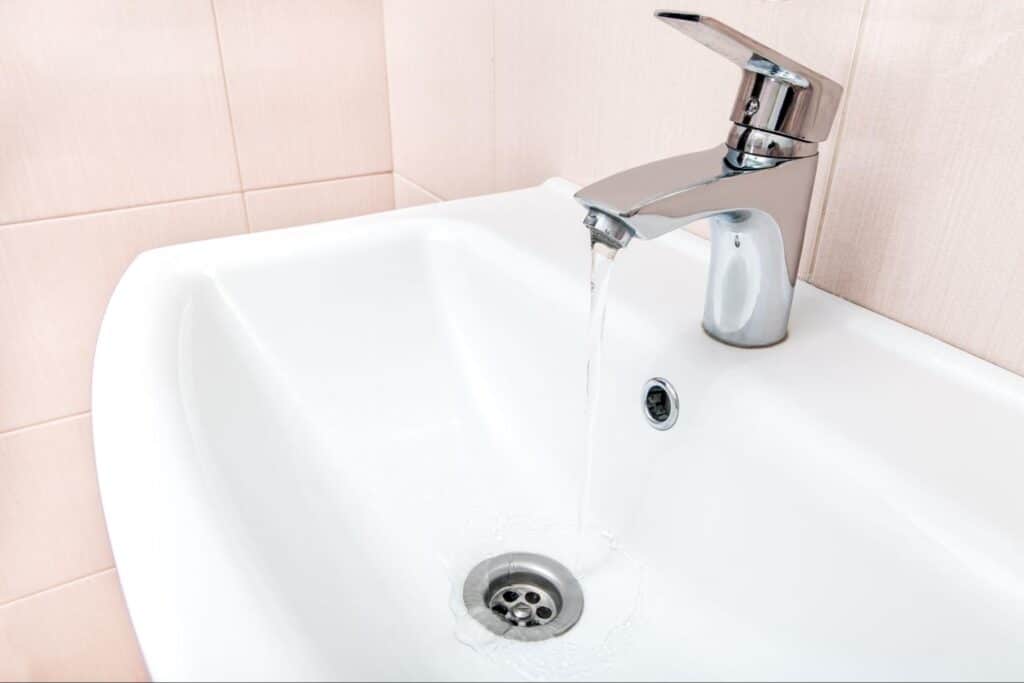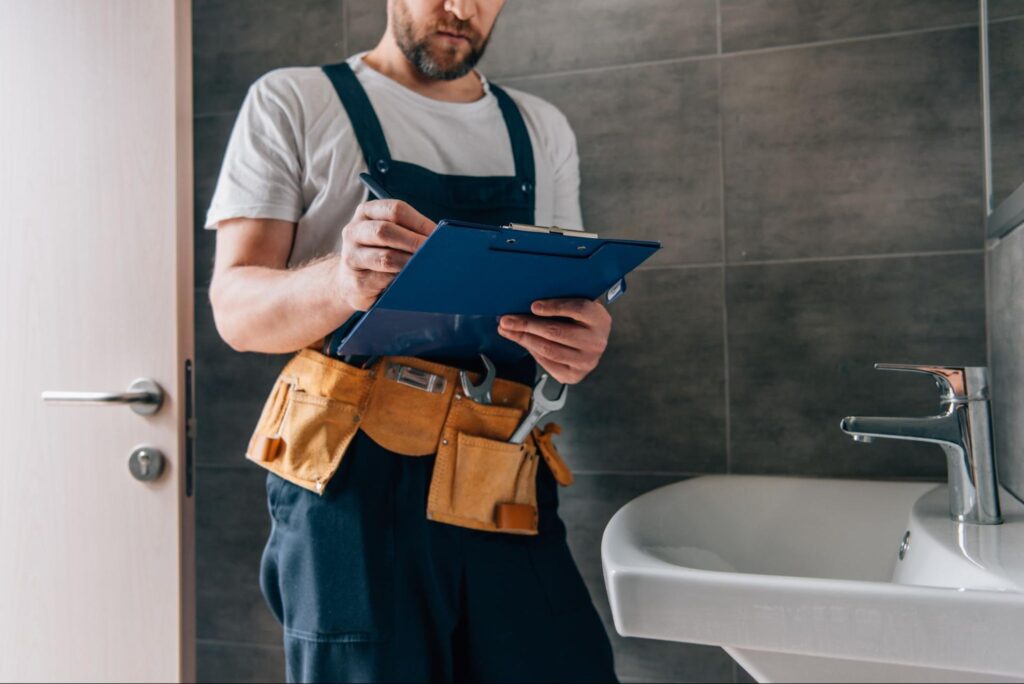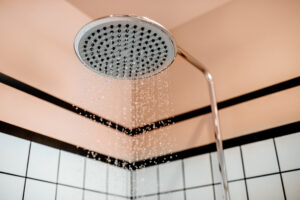Noticing a persistent sewage smell in your home isn’t just unpleasant—it can signal underlying plumbing issues that affect your air quality and health. Homeowners need a clear plan to diagnose and resolve these odors. This guide highlights the common causes of sewer smells, how to identify their source, and practical steps for resolution. When troubleshooting doesn’t clear the odor, it’s wise to call professionals like Hydromax Plumbing for expert service.
Common Reasons Your House Smells Like Sewage
A sewage smell often indicates plumbing problems rather than a cleanliness issue. The main culprits include:
- Dry or Faulty P-Traps: These U-shaped pipes under sinks and tubs hold water to block sewer gases. When they dry out or leak, odors escape.
- Leaking or Damaged Pipes: Small leaks in hidden or visible pipes can allow sewer gases to seep out.
- Blocked Plumbing Vents: Vents release gases outside; if clogged by debris or nests, gases can back up indoors.
- Drain or Sewer Line Backups: Obstacles in the drain or sewer line hinder proper flow, causing odors.
- Improper Seals on Toilets or Fixtures: Worn wax rings or faulty seals allow gases to leak.
Addressing these issues quickly is essential for protecting indoor air quality and preventing potential health problems. In many cases, simply refilling dry traps or clearing vent stacks can restore proper function, though more severe issues may require professional diagnostics.
Step-by-Step: How to Pinpoint the Odor in Your Home
Finding the exact source of a sewer smell is the first step to fixing it. Instead of guessing, follow this room-by-room guide to trace the odor back to its origin. Start in the area where the smell is strongest.
If the Smell is in a Bathroom
Bathrooms are the most common source of sewer odors due to the number of plumbing fixtures.
- Check the Drains First (P-Traps): Is the smell coming from a guest bathroom or a shower that’s rarely used? The U-shaped pipe under the drain (the P-trap) likely has dried out, allowing sewer gas to escape.
- Examine the Toilet: A secure toilet should have no movement. Kneel down and gently try to rock the toilet. If it wobbles, the wax ring that creates a seal at the base is likely broken, allowing sewer gas to leak out. You may also see water stains or discoloration around the base.
- Inspect Under the Sink: Look inside the vanity for any signs of moisture, active drips, or brown water stains on the cabinet floor. A slow leak from the P-trap or its connections can release odors and cause water damage.
- Listen for Gurgling Sounds: When you flush the toilet or drain the sink, do you hear a gurgling or bubbling sound from another drain (like the tub)? This is a classic sign that your plumbing vent is clogged, preventing air from moving properly through the system.
If the Smell is in the Kitchen
- Inspect Under the Sink: This is the primary culprit. Check for leaks from the P-trap, the garbage disposal connections, and the dishwasher drain hose. A musty or damp smell here points to a leak.
- Check the Garbage Disposal: Sometimes, the smell isn’t from the sewer at all, but from old food waste trapped inside the disposal.
- Look for Slow Drainage: If your kitchen sink drains slowly, it may indicate a clog building up from grease, food scraps, and other debris. This blockage can trap smelly, stagnant water.
If the Smell is in the Basement, Laundry Room, or Crawlspace
- Check the Floor Drains: Basements and utility rooms often have floor drains that, like guest bathrooms, can have their P-traps dry out from lack of use.
- Inspect Exposed Pipes and Sewer Lines: Look for any damp spots, drips, or cracks on the pipes running along the ceiling or walls. Check the area where your main sewer line exits the house for any signs of a backup.
- Check the Sump Pump Pit: If you have a sump pump, check the pit for stagnant, smelly water that could be the source of the odor.
If the Smell is Faint, Everywhere, or Hard to Pinpoint
If you can’t isolate the odor to one room, or if drains throughout the house are draining slowly, it could point to one of two larger system issues:
- A Blocked Plumbing Vent: The vertical pipe running through your roof allows sewer gases to escape and regulates air pressure in your drain lines. If this vent gets clogged with leaves, debris, or an animal’s nest, the gases have nowhere to go but back into your house.
- A Clog in the Main Sewer Line: A blockage in your home’s main sewer line will affect every drain in the house. This is a serious issue often accompanied by sewage backing up into the lowest drains in the home (typically in the basement).
If your investigation points to a wobbly toilet, a main line clog, or a blocked vent, it’s time to stop the DIY work and call a professional for an expert diagnosis.
3 Simple DIY Fixes You Can Try Right Now

Before you pick up the phone, take a few minutes to try these simple, effective solutions. A surprising number of sewer odor issues can be resolved without any special tools or plumbing knowledge.
Fix #1: The 60-Second P-Trap Fix
This is the most common and easiest fix, especially for smells coming from a guest bathroom, floor drain, or any fixture that isn’t used daily.
The U-shaped pipe under every drain, called a P-trap, holds a small amount of water that acts as a barrier, blocking sewer gases from entering your home. When a fixture goes unused, this water can evaporate, breaking the seal.
- For Sinks and Showers: Simply run the water for 60-90 seconds. This is long enough to completely refill the trap and restore the protective water barrier.
- For Floor Drains: Pour a gallon of water directly into the drain.
- Pro Tip: For drains that are very rarely used (like in a workshop or vacation home), pour a tablespoon of mineral oil into the drain after refilling the trap. The oil will float on top of the water and slow down evaporation.
Fix #2: Clear a Minor Clog Naturally
A clog forming from hair, soap scum, or grease can trap stagnant, smelly water. Instead of reaching for harsh chemical drain cleaners (which can damage your pipes), try these two methods first.
Method A: Use a Plunger
- Make sure you have a good seal around the drain. For sinks, plug the overflow hole with a wet rag.
- Plunge vigorously in an up-and-down motion for about 20 seconds. The pressure created can often dislodge the source of the clog and the smell.
Method B: The Baking Soda & Vinegar Flush
- Pour about a cup of baking soda down the drain.
- Follow it with a cup of white vinegar. The mixture will fizz and bubble, helping to break down grime.
- Let it sit for 15-20 minutes.
- Flush the drain thoroughly with a pot of very hot (but not boiling) water.
Method C: Use a Handheld Drain Snake (Auger)
If the first two methods don’t work, the clog may be a more solid mass of hair or debris that needs to be physically removed. A simple, inexpensive handheld drain snake is the right tool for this job.
- Push the end of the snake into the drain opening and slowly feed it down the pipe.
- Continue pushing until you feel resistance—that’s the clog.
- Once you hit the clog, turn the handle of the auger clockwise. This motion will either break up the blockage or allow the snake’s tip to hook onto it.
- Slowly pull the snake back out of the drain. Be prepared, as you will likely pull out the unpleasant gunk that was causing the blockage.
- After removing the snake, flush the drain with hot water to wash away any remaining debris.
Caution: Never force the snake aggressively if it gets stuck, as this can damage the pipe. If you can’t clear the blockage with a handheld snake, the problem is likely deeper in your plumbing system and requires a professional.
Fix #3: Inspect Your Plumbing Vent (With Caution)
Your plumbing system has a vent pipe that exits through your roof. Its job is to safely release sewer gases outside. If this vent gets clogged with leaves, debris, or a bird’s nest, the gases can get forced back into your home.
IMPORTANT SAFETY WARNING: This step is only for homeowners who can safely and comfortably access their roof. If you have a steep roof, or are not comfortable with heights, do not attempt this. Your safety is the top priority.
- From the Ground: You can often spot a major blockage from the ground using binoculars. Look for a visible pile of leaves or a bird’s nest capping the pipe.
- On the Roof (If Safe): Visually inspect the vent opening. Carefully remove any large debris from around the opening.
- Gentle Flush: Use a garden hose to spray a stream of water down the vent. This can often clear out smaller, unseen blockages and restore proper airflow.
If these three fixes don’t solve the problem, it’s a clear sign that the issue is deeper within your plumbing system. Now is the time to stop your DIY efforts and call a professional.
Addressing HVAC and Drainage Systems
Sometimes sewer odors can spread through your HVAC system if contaminated air is drawn into the ducts. HVAC-related odor sources include:
- Clogged Condensate Lines: Blockages in the drainage system around air conditioning units can lead to stagnant water and associated odors.
- Nearby Floor Drains: Drains located near air intakes may contribute sewer gases that mix into circulated air.
- Duct Leaks: Gaps or leaks in HVAC ductwork may allow sewer gas from adjacent spaces to infiltrate your airflow.
Basic Steps to Maintain Clean Air
- Regular Inspection of Drains: Pour water into all drains periodically to ensure they are functioning as intended.
- Cleaning Condensate Lines: Flushing lines with a mild cleaner can remove buildup and prevent odor formation.
- Checking Air Intakes: Ensure that air intakes are not located near potential sources of contamination.
- Sealing Ductwork: Repair any visible leaks by properly sealing your ductwork.
Routine HVAC maintenance, along with proper cleaning of all drainage systems, can significantly reduce the presence of unpleasant odors.
Common Mistakes to Avoid
To effectively address sewer odors, avoid these common pitfalls:
- Relying Solely on Air Fresheners: While they may mask the odor temporarily, air fresheners do not eliminate the source and may delay proper diagnosis.
- Making Assumptions Without Investigation: Guessing without a thorough inspection can lead to unnecessary repairs and wasted resources.
- Ignoring Early Warning Signs: Minor issues like occasional odors or slow drains can quickly escalate if left unattended.
- Overlooking the Vent System: Even if individual fixtures appear fine, blocked vents can significantly contribute to the odor problem.
- Delaying Professional Assistance: When DIY solutions fail to resolve the issue, postponing professional help can lead to more severe damage and increased repair costs.
A systematic and methodical approach not only tackles the current odor but also helps prevent future occurrences.
Know When to Call a Professional
Smart DIY means knowing when to stop. If you’ve tried the basics and the sewer smell won’t go away, don’t ignore it or mask it with air fresheners. This is your home’s warning sign of a bigger problem.
Call a professional if you notice:
- The smell persists after your DIY attempts.
- Water stains appear on walls, floors, or ceilings.
- Multiple drains are slow, gurgling, or backing up at once.
- You suspect a hidden leak behind a wall or under the floor.
- A toilet is wobbly or leaking water from its base.
These symptoms point to serious issues that require professional diagnostic tools. Technicians can find the true source of the odor and provide a lasting solution, preventing costly damage.
Advanced Diagnostic Tools and Technology
Modern plumbing solutions employ advanced diagnostic methods that pinpoint the source of sewer odors with great accuracy. Technologies include:
- Video Camera Inspections: A non-invasive, high-resolution camera is fed into your pipes to give us a clear view of any blockages, cracks, or damage inside.
- Smoke Testing: We introduce a safe, non-toxic smoke into your sewer lines. The smoke escapes through any hard-to-find cracks or breaks, making hidden leaks visible.
- Moisture Meters: These specialized sensors detect hidden moisture within walls and under floors, identifying the source of leaks that are invisible to the naked eye.
- Thermal Imaging: Infrared cameras are used to spot temperature differences caused by water, revealing hidden leaks or clogs behind walls without any demolition.
These advanced methods expedite diagnosis while minimizing disruptions, leading to tailored repair solutions that address both immediate problems and long-term maintenance needs.
The Dangers of Sewer Gas: Protecting Your Family’s Health
Exposure to sewer gases is not only uncomfortable but also poses serious health risks. Sewer gases often contain harmful substances such as methane, hydrogen sulfide, and ammonia. These compounds can lead to:
- Respiratory Issues: Prolonged exposure may cause coughing, shortness of breath, or irritation of the respiratory system.
- Neurological Symptoms: High concentrations of hydrogen sulfide can trigger headaches, dizziness, and loss of coordination.
- Long-Term Health Effects: Chronic low-level exposure can contribute to persistent health issues and might aggravate existing conditions.
If you detect a strong sewage odor, ventilate your home by opening windows and doors, and seek professional help immediately. While minor odors might be managed with simple fixes, persistent smells require prompt attention to safeguard your health and property.
Preventive Maintenance and Long-Term Solutions

Preventive maintenance is key to avoiding recurring sewer odors. Homeowners should consider routine plumbing inspections, especially for older properties or those with a history of plumbing issues. Regular checks of P-traps, vent assemblies, and drainage lines help catch potential problems before they escalate into costly repairs.
Implementing an annual maintenance plan with a trusted plumbing service can include:
- Routine Inspections: Comprehensive evaluations of your drain, pipe, and ventilation systems.
- Preventive Cleaning: Professional cleaning of drains and vents to remove buildup and debris.
- System Upgrades: Incorporating updates like trenchless repairs can reduce the risk of leaks and clogs.
Educating homeowners about proper maintenance and usage—for example, what should not be flushed—also helps eliminate odors and prolongs the plumbing system’s lifespan.
Take Charge of Your Home: Prevent and Resolve Sewer Odors
A persistent sewage smell is more than just an inconvenience—it signals a need for immediate action. By addressing issues such as dry P-traps, leaks, and blocked vents, you help protect your family’s health and preserve your home’s comfort. However, if the odor continues or the problem appears complex, professional intervention is essential.
Reach out to Hydromax Plumbing today for a comprehensive inspection, repair service, or maintenance plan. With services available around the clock, they’re ready to restore a fresh, odor-free environment to your home.




